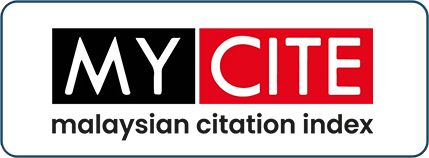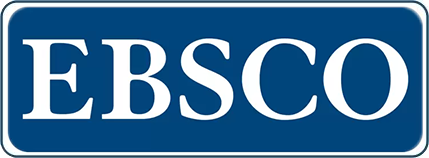Development Of Naqli And Aqli Integration Framework For Effective Dyslexia Arabic Language Learning Tools
DOI:
https://doi.org/10.33102/jfatwa.vol13no1.166Keywords:
Arabic language learning, Dyslexic Students, Naqli and Aqli knowledge, learning tools, knowledge integrationAbstract
This qualitative study addresses a conceptual framework for integrating naqli (religious education) and aqli (conventional knowledge) into Arabic language learning tools for dyslexic students. Literature reviews and document analysis techniques were used in order to study backgrounds and processes related to the proposed framework. The results are then presented narratively, starting with the four identifiable categories of naqli and aqli integration and how it can help determine the set-up of an instrument of Arabic language knowledge transfer, which is designed to help individuals with dyslexia. Each level is established to serve either as an independent entity that balances each other out, or to take the form of a stage in a process that influences other processes. Understanding how the integration works is fundamental to bringing about effective implementation of Dyslexia Arabic Language Learning Tools (DALT). Within the framework of the naqli-aqli integration, knowledge and expertise will have to be coupled with good character to foster learners’ civic development.
Downloads
References
AlRowais, F., Wald, M., & Wills, G. (2014). Developing a New Framework for Evaluating Arabic Dyslexia Training Tools. In Computers Helping People with Special Needs (pp. 565-568). Springer International Publishing.
Alwi, N. H. M., Mahir, N. A., & Ismail, S. (2014). Infusing Social Media in Teaching and Learning (TnL) at Tertiary Institutions: A Case of Effective Communication in Universiti Sains Islam Malaysia (USIM). Procedia-Social and Behavioral Sciences, 155, 265-270.
Béland, R., & Mimouni, Z. (2001). Deep dyslexia in the two languages of an Arabic/French bilingual patient. Cognition, 82(2), 77-126.
Berninger, V. W., & Wolf, B. J. (2010). Teaching Students with Dyslexia and Dysgraphia: Lessons from Teaching and Science. Education Review//Reseñas Educativas.
Dewey, D. P., Belnap, R. K., & Hillstrom, R. (2013). Social Network Development, Language Use, and Language Acquisition during Study Abroad: Arabic Language Learners' Perspectives. Frontiers: The interdisciplinary journal of study abroad, 22, 84-110.
Elbeheri, G., Everatt, J., Reid, G., & Mannai, H. A. (2006). Dyslexia assessment in Arabic. Journal of Research in Special Educational Needs, 6(3), 143-152.
Firth, N., Frydenberg, E., Steeg, C., & Bond, L. (2013). Coping Successfully with Dyslexia: An Initial Study of an Inclusive School‐Based Resilience Programme. Dyslexia, 19(2), 113-130.
IDA - International Dyslexia Association. (2002) Frequently Asked Questions About Dyslexia: What is Dyslexia? (Formal Definition). Retrieved (August 07, 2011) from: http://www.interdys.org/FAQWhatIs.htm
Mohd Rushdan Mohd Jailani, (2013) Method/Level of Integration Naqli and Aqli knowledge, unpublished. Taklimat di USIM.
Miles, E. (2000). Dyslexia may show a different face in different languages. Dyslexia, 6(3), 193-201.
Noor Hisham & Nurul Hudani. (2013). Falsafah Ilmu. Kelantan. Universiti Malaysia Kelantan.
Nurkhamimi, Z., Mohd Feham, M. G., & Sahrir, M. S. (2011). Steps and procedures of teaching writing skill via Wiki among learners of Arabic as second language as a model. Journal of Linguistic and Literary Studies, 9, 325-341.
Nurkhamimi, Z. (2014). The Development of Multimedia Programme for Teaching and Learning Arabic Vocabularies: Moodle as an Example. (Unpublished PhD dissertation, International Islamic University Malaysia) (In Arabic).
Schneider, E., & Crombie, M. (2012). Dyslexia and foreign language learning. David Fulton Publishers.
Smythe, I., Everatt, J., & Salter, R. (2005). The international book of dyslexia: a guide to practice and resources. John Wiley & Sons.
Snowling, M. J. (2000). Dyslexia (2nd edn). Malden, MA: Blackwell Publishing.
Spencer, K. (1999). Predicting word‐spelling difficulty in 7‐to 11‐year‐olds. Journal of Research in Reading, 22(3), 283-292.
Trentman, E. (2013). Imagined communities and language learning during study abroad: Arabic learners in Egypt. Foreign Language Annals, 46(4), 545-564.
Washburn, E. K., Joshi, R. M., & Binks‐Cantrell, E. S. (2011). Teacher knowledge of basic language concepts and dyslexia. Dyslexia, 17(2), 165-183.
Wei, X., Blackorby, J., & Schiller, E. (2011). Growth in reading achievement of students with disabilities, ages 7 to 17. Exceptional Children, 78(1), 89-106.
Winke, P., Gass, S., & Sydorenko, T. (2013). Factors influencing the use of captions by foreign language learners: An eye‐tracking study. The Modern Language Journal, 97(1), 254-275.
Downloads
Published
Issue
Section
License
The copyright of this article will be vested to author(s) and granted the journal right of first publication with the work simultaneously licensed under the Creative Commons Attribution 4.0 International (CC BY 4.0) license, unless otherwise stated.















